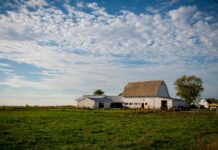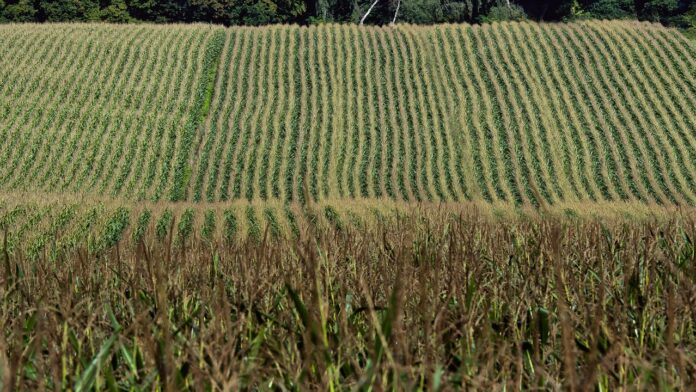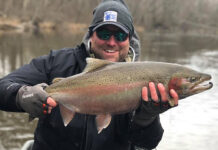Spring weather this year created a long, drawn-out planting season. The earliest planted corn that I have seen is projected to start tasseling July 9, while another farm I was on recently won’t have corn tasseling until about Aug. 20.
This long silking and pollination window between fields could easily lead to each field having very different disease pressure. Scouting each cornfield as it begins to tassel and assessing weather conditions are important parts of making fungicide decisions on your farm. The crop protection network, which The Ohio State University is part of offers a tool at connect.doit.wisc.edu/cpn-risk-tool, which can be used to determine if environmental conditions are right for tar spot and gray leaf spot development.
When fungal disease is present in corn silage corn at tassel, a fungicide application at VT-R1 to control these fungal diseases, reduces fiber concentration, neutral detergent fiber (NDF) and improves nutritional value compared to the untreated control. Corn treated with fungicide had improved fermentation and more consistent dry matter values.
When fungal disease infects corn, one of its natural responses to stop the spread of the disease is to increase lignin around the infected area to stop the disease spread, which reduces digestibility.
Tar spot was first reported in Ohio in 2021, with only very late-season reports in 2022; however, by 2023, a few areas of Ohio found tar spot at tassel. Research has shown that corn planted later is at the most significant risk of losses from tar spot.
One of the greatest risks to corn silage is from severe infection, causing premature plant death. Tar spot reduces silage moisture, digestibility and energy which can also lead to poor fermentation with lower silage moisture and plant sugars. Scouting for tar spot should be done weekly from tassel through R3. Lesions will be small, black, raised spots appearing on both sides of the leaves along with leaf sheaths and husks. If tar spot is found in fields, a fungicide application can help slow disease spread, but be cautious of the preharvest interval of the fungicide.
Other leaf diseases such as gray leaf spot, northern corn leaf blight, common rust and southern rust can also decrease digestibility and fermentation, just not as rapidly as tar spot. Identifying the diseases present in your corn field can help you choose the most effective fungicide.
Mycotoxins
Maybe the biggest concern for dairy producers is mycotoxin contamination of corn silage and high moisture corn with many nutritionists encouraging levels below 1 ppm in corn utilized in the lactating ration. Fungicides may have the ability to reduce mycotoxin levels and improve silage digestibility.
DON is one of the primary mycotoxins in Ohio corn. It is caused by the fungus Fusarium graminearum and causes both Gibberella stalk rot and Gibberella ear rot, making it of concern for both the grain and forage quality.
One study under low Gibberella disease pressure saw that in all cases but one, an application of fungicide at R1 reduced DON levels by at least 50%. The trial was then expanded the second year, which was a high-disease-pressure year with DON levels as high as 17.9 ppm in one hybrid and 30.3 ppm in the other hybrid.
Again, fungicide had little effect on the yield or forage quality of these two BMR hybrids, but a few products consistently lowered DON levels.
A 2021 corn silage trial in Ohio demonstrated a reduction in vomitoxin from 3.1 ppm in the control to 0.5 ppm with the application of Miravis Neo. The products that consistently lowered DON levels contained a triazole as one of their active ingredients, with prothioconazole being the most common. While several products contain this active ingredient, only Proline and Miravis Neo are labeled for stalk and ear rot control.
The ideal application window, as determined by multiple studies, is R1, which spans from the point when silks emerge until they become dry, approximately 10 days later. This application is primarily for Gibberella ear rot, which infects the ears during pollination. This creates some logistical issues for applications that require high-clearance sprayers or aerial applications.
We have observed better coverage at the silk level when using 20 gallons per acre compared to 15 gallons per acre with a high-clearance sprayer. We are currently studying best practices when using a drone application. Mycotoxin levels were low in our first year, so no differences were observed. For foliar disease control, all drone applications decreased disease severity.













